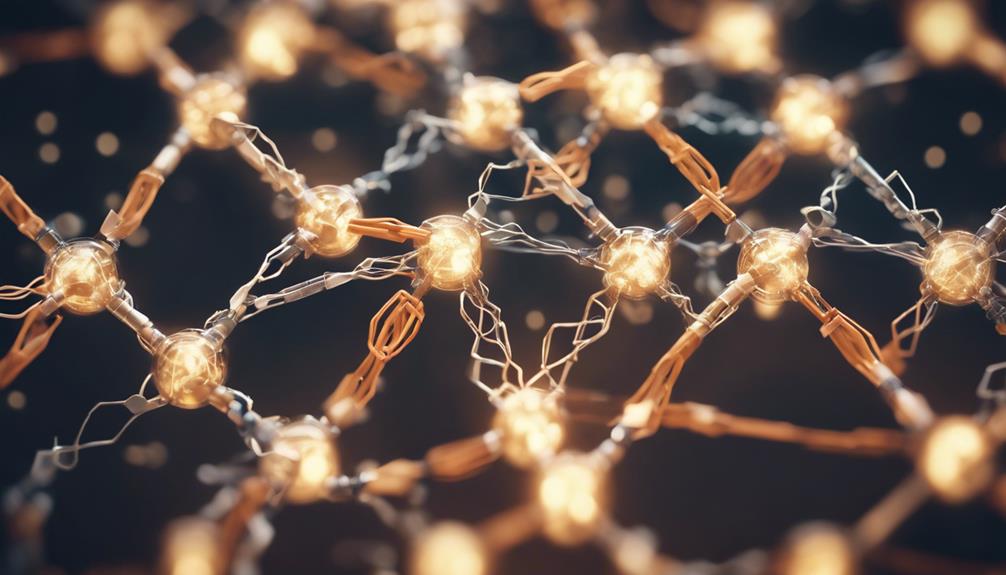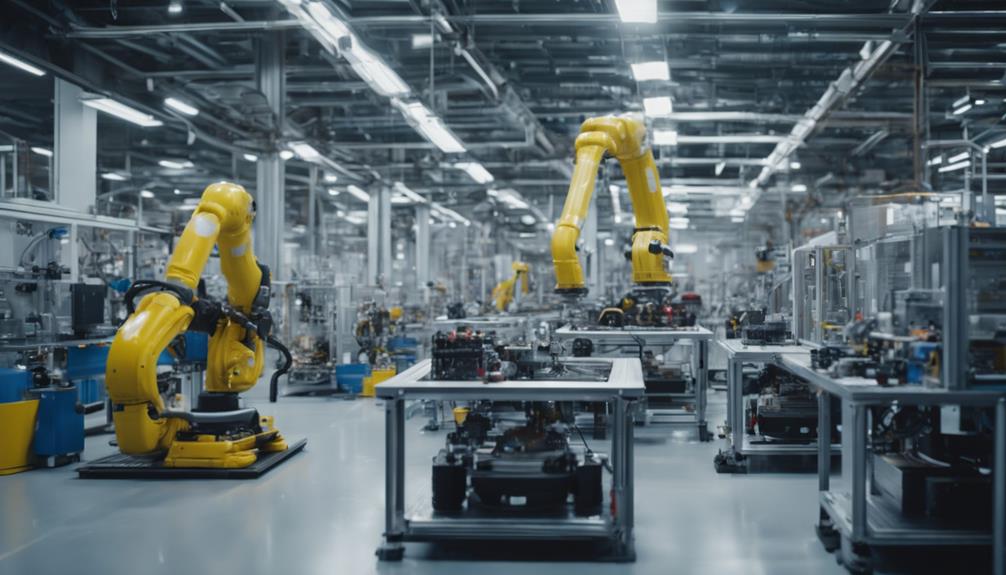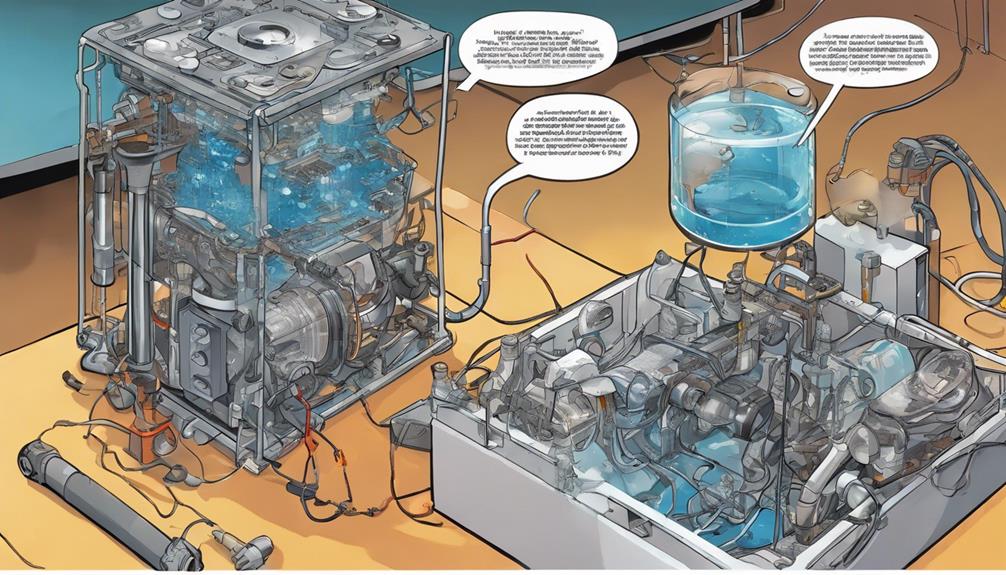In the domain of recycling hydrogen fuel cells, advancements and partnerships are revolutionizing sustainable solutions and driving innovative technologies. Recent progress in reclaiming precious metals from spent cells highlights the shift towards efficient material extraction. Collaborative industry efforts are paving the way for a closed-loop system that maximizes resource efficiency and minimizes waste generation. Stakeholder engagements and sustainability initiatives further propel these advancements, promising a brighter future for fuel cell recycling. Discover more about the evolving landscape of green energy transformation and circular economy principles to stay informed on the latest trends and insights in this rapidly developing field.
Key Takeaways
- Industry collaborations driving advancements in recycling hydrogen fuel cells.
- Advanced recovery processes reclaiming valuable materials like platinum and palladium.
- Sustainable end-of-life solutions through circular economy principles.
- Collaborations promoting material reuse and closed-loop systems.
- Technological innovations in cathode recycling and efficient extraction methods.
Green Energy Transition
In the field of sustainable energy, the green energy change is driving significant advancements in recycling hydrogen fuel cells.
Green hydrogen, a vital component of this shift, is being produced through innovative recycling processes that aim to recover valuable materials such as platinum and palladium from end-of-life fuel cells.
These initiatives not only promote the efficient use of resources but also align with the principles of the circular economy, where materials are reused and recycled in a closed-loop system.
Circular Economy Strategies

You should consider how circular economy principles drive the efficient recycling of hydrogen fuel cells, maximizing material value. Industry collaboration strategies play an essential role in advancing sustainable end-of-life solutions for these energy systems.
Additionally, innovative recycling technologies are vital for recovering critical components and supporting a sustainable hydrogen economy.
Circular Economy Principles
Implementing circular economy principles in hydrogen fuel cell recycling involves strategically closing material loops and extending product lifecycles to minimize waste generation. By embracing these strategies, the fuel cell industry can reduce its environmental impact and promote sustainable resource management. One essential aspect of circular economy principles is the recovery of valuable materials like platinum and palladium through efficient recycling processes. This not only conserves raw materials but also decreases the reliance on new resource extraction, contributing to a more sustainable supply chain.
To illustrate the significance of circular economy principles in hydrogen fuel cell recycling, let's consider the following table showcasing the materials used in fuel cells, their potential for recovery, and the benefits of implementing circular economy strategies:
| Material | Potential for Recovery | Benefits of Circular Economy Strategies |
|---|---|---|
| Platinum | High | Reduced resource extraction |
| Palladium | High | Environmental protection |
| Graphite | Moderate | Economic efficiency |
| Membranes | Low | Waste minimization |
Industry Collaboration Strategies
To advance the circular economy principles in hydrogen fuel cell recycling, fostering industry collaboration is key to driving sustainable materials reuse. Industry collaboration strategies focus on creating a closed-loop system where valuable materials like platinum group metals can be recovered from fuel cells. Companies are partnering to develop innovative recycling technologies that facilitate the extraction of these precious resources.
These collaborations aim to overcome challenges such as the high initial costs of recycling infrastructure and regulatory uncertainties in the fuel cell recycling market. By sharing best practices, knowledge, and resources, circular economy strategies are optimizing the end-of-life processes of hydrogen fuel cells.
Joint initiatives involving automotive manufacturers, recycling firms, and government bodies are at the forefront of driving advancements in the recycling of fuel cell components. Through strategic partnerships and cooperative efforts, the industry is working towards a more sustainable future by reusing valuable materials and minimizing waste in the hydrogen fuel cell sector.
Innovative Recycling Technologies
Several innovative recycling technologies play a key role in recovering valuable materials such as platinum and palladium from end-of-life hydrogen fuel cells. These technologies focus on efficiently extracting Platinum Group Metals (PGMs) from spent fuel cells, contributing to sustainable recycling methods.
Advanced processes not only reclaim these precious metals but also support the circular economy by reusing them in new fuel cell production. Collaborations between automotive manufacturers and recycling firms are driving the development of efficient recycling solutions tailored to the unique requirements of fuel cell components.
Government regulations further propel the industry towards adopting these sustainable practices, emphasizing the importance of resource efficiency. By leveraging technological advancements, the sector underscores its commitment to environmental sustainability and the responsible management of materials critical for hydrogen fuel cell technology.
Embracing these innovative recycling methods guarantees a more sustainable future for the hydrogen fuel cell industry.
Collaborative Recycling Innovations

You can explore the world of joint recycling ventures and shared innovation initiatives that are shaping the landscape of hydrogen fuel cell recycling.
These collaborative efforts between industry leaders and recycling experts are paving the way for sustainable practices and resource recovery in the fuel cell sector.
Joint Recycling Ventures
How do joint recycling ventures in the hydrogen fuel cell industry drive collaborative recycling innovations?
Collaborative recycling ventures in the industry bring together automakers, recycling firms, and research institutions to focus on recovering valuable materials such as platinum and palladium from end-of-life fuel cells.
By forming strategic partnerships, these joint initiatives aim to develop advanced recycling technologies that not only recover precious metals but also reduce waste, lower costs, and promote sustainability in the sector.
Through these collaborations, innovative recycling methods are being created to enhance the circular economy of fuel cell technologies.
The shared goal of these collaborative recycling ventures is to establish a more efficient and environmentally friendly approach to managing end-of-life fuel cell products.
Shared Innovation Initiatives
Joint recycling ventures in the hydrogen fuel cell industry drive collaborative recycling innovations by focusing on shared innovation initiatives to recover valuable materials and enhance sustainability.
Partnerships between automotive manufacturers and recycling firms play a pivotal role in advancing recycling technologies for fuel cells. These shared innovation programs are essential for developing novel methods that not only recover materials like platinum and palladium but also promote sustainability by reducing environmental impact.
By collaborating on recycling efforts, the industry can address the increasing need for efficient recycling solutions in fuel cell technology, ultimately fostering circular economy practices. The advancements made through these collaborative initiatives not only help in recovering critical materials but also contribute to a more sustainable approach to fuel cell technology.
Through joint efforts, automotive manufacturers and recycling firms are driving progress towards a greener and more sustainable future for hydrogen fuel cells.
Market Growth Projections

The hydrogen fuel cell recycling market is poised for substantial growth by 2031, driven by the increasing adoption of fuel cell electric vehicles and stationary fuel cells. Market growth projections indicate a rising demand for innovative recycling methods to recover valuable materials such as platinum and palladium from end-of-life fuel cells. This surge in demand isn't solely due to environmental concerns but also stems from government regulations promoting sustainable fuel cell solutions.
Moreover, advancements in recycling technologies and collaborations between automotive manufacturers and recycling firms are playing a pivotal role in expanding the market. These partnerships are essential in ensuring a sustainable supply chain for fuel cell materials.
As the industry evolves, research efforts are increasingly focused on developing efficient and eco-friendly recycling processes to meet the growing demand for sustainable fuel cell solutions. The market is set to witness significant transformations as it aligns with global initiatives towards a greener future.
Key Insights and Trends

Amidst the changing landscape of the hydrogen fuel cell recycling market, significant trends and key insights are reshaping industry dynamics. The growing demand for recycling solutions, driven by the increase in fuel cell electric vehicles (FCEVs) and stationary fuel cells, has led to a focus on advancements in recycling technologies.
Partnerships between automotive manufacturers and recycling firms are playing a pivotal role in driving these advancements and shaping the market. Government regulations advocating for sustainable practices have further accelerated the development of efficient fuel cell recycling processes.
Collaborations spanning the entire value chain and continuous technological innovations are key factors fueling the growth of the hydrogen fuel cell recycling market. Importantly, there's a noticeable shift towards circular economy practices within the industry. This shift emphasizes the recovery of valuable materials such as platinum and palladium from end-of-life fuel cells, highlighting a commitment to sustainable and environmentally conscious practices.
Advancements in Recovery Processes

New groundbreaking recovery processes in hydrogen fuel cell recycling are revolutionizing the industry's approach to sustainability and efficiency. These advancements are shaping the future of fuel cell recycling by focusing on holistic dismantling and advanced recovery techniques.
Here are some key highlights:
- Holistic Dismantling: New approaches encompass thorough dismantling methods that cover all components are efficiently separated and recovered.
- State-of-the-Art Disassembly: Cutting-edge disassembly techniques are paving the way for potential automation, enabling faster and more precise recovery processes.
- Innovative Cathode Recycling: The recycling of electronic scrap for molten carbonate fuel cell cathodes demonstrates a creative approach to recovery within the industry.
- Sustainable End-of-Life Practices: The hydrothermally-assisted recovery of Yttria-stabilized zirconia (YSZ) from end-of-life solid oxide cells showcases sustainable practices that prioritize environmental responsibility.
These advancements underscore the industry's dedication to improving fuel cell technology design from an end-of-life perspective, ultimately enhancing the overall recycling and recovery processes.
Stakeholder Collaborations

Numerous stakeholder collaborations drive innovation in hydrogen fuel cell recycling, fostering sustainable practices and material recovery.
Partnerships between automotive manufacturers and recycling firms are essential in recovering valuable materials such as platinum and palladium. These collaborations focus on developing innovative methods to meet the rising demand for fuel cell reuse and materials recovery.
Government regulations promoting sustainability further push collaborations across the value chain for efficient recycling solutions. The advancements in recycling technologies result from collaborative efforts between key industry players working towards establishing a circular economy for fuel cell materials.
Collaborations in the fuel cell recycling sector play a critical role in addressing environmental concerns, reducing carbon emissions, and promoting sustainable practices within the hydrogen economy. By working together, stakeholders pave the way for a more sustainable and environmentally friendly approach to fuel cell recycling.
Industry Sustainability Initiatives

How do industry sustainability initiatives in hydrogen fuel cell recycling contribute to environmental conservation and resource recovery?
Industry efforts in hydrogen fuel cell recycling play a pivotal role in promoting sustainability and resource efficiency. Here are some key ways in which sustainability initiatives are driving positive change:
- Recovering Valuable Materials: Initiatives focus on extracting precious metals like platinum group metals and rare earth elements from used fuel cells, reducing the need for mining new resources.
- Advancements through Collaborations: Partnerships between automotive manufacturers and recycling firms are driving technological advancements in the recycling processes for hydrogen fuel cells.
- Regulatory Support for Sustainable Practices: Regulations that promote sustainable practices in fuel cell recycling help create a more environmentally friendly industry.
- Market Growth Stimulated by Strategic Initiatives: Key industry players' strategic initiatives are propelling the growth of the hydrogen fuel cell recycling market, promoting a circular economy approach.
These collaborative efforts and strategic initiatives are fundamental for the long-term sustainability of the hydrogen fuel cell industry.
Frequently Asked Questions
Can You Recycle Hydrogen Fuel Cells?
Yes, you can recycle hydrogen fuel cells. Advanced technologies help recover valuable materials like platinum and palladium. Government regulations promote sustainable practices. Partnerships between manufacturers and recycling firms drive innovations. Fuel cell recycling is essential for sustainability.
What Is the Future Trend of Hydrogen Fuel Cells?
In the future, hydrogen fuel cells will see increased adoption across transportation, stationary applications, and industrial sectors. Advancements in recycling technologies drive sustainable practices. Collaborations between key players promote efficient recycling solutions, shaping the market.
Who Is the Leader in Hydrogen Fuel Cell Technology?
The leader in hydrogen fuel cell technology is Serov. He focuses on affordability and efficiency, shifting technology to mass production. His research covers materials, devices, and catalysts, impacting transportation, industry, and energy storage. Collaborations drive advancements.
What Company Is Making Hydrogen Fuel Cells?
Proton Motor Fuel Cell is making hydrogen fuel cells. They lead in this technology. Electrocycling, KLEIN Anlagenbau, Gannon & Scott, and Hensel Recycling are also key players in recycling and development collaborations.
Which is more sustainable for long-term use, fuel cells or batteries?
When considering the long-term sustainability of energy sources, the fuel cell batteries comparison becomes essential. While both technologies have their pros and cons, fuel cells have the edge in terms of sustainable long-term use. This is due to their ability to continuously produce electricity through the chemical reaction between hydrogen and oxygen.
Conclusion
As you navigate the ever-changing landscape of hydrogen fuel cell recycling, remember that collaboration is key. By working together to advance recovery processes and implement sustainable initiatives, you can help drive the market growth projections and contribute to the circular economy strategies.
Stay informed on the latest advancements and trends to make a positive impact on the industry. Remember, the future of green energy transformation relies on your active participation and engagement.









